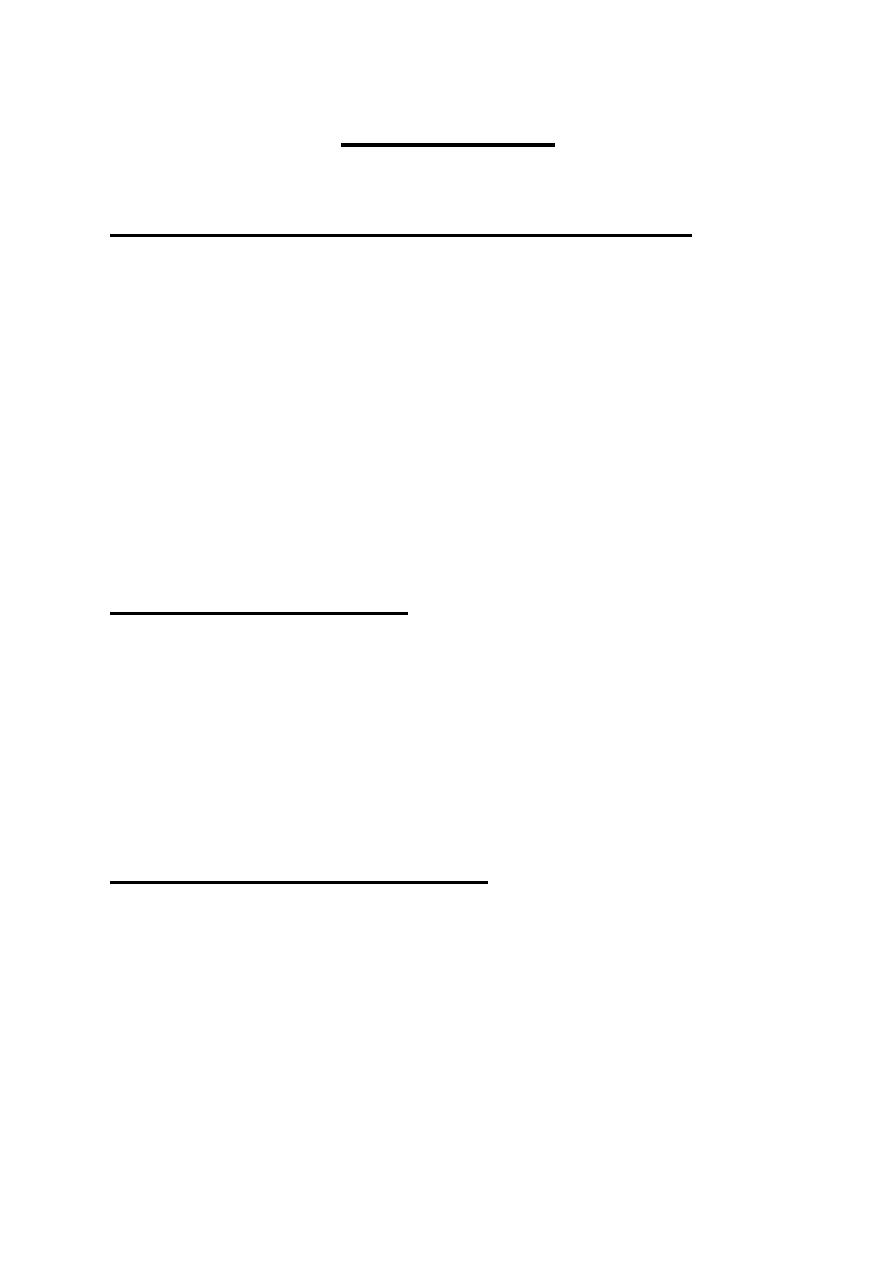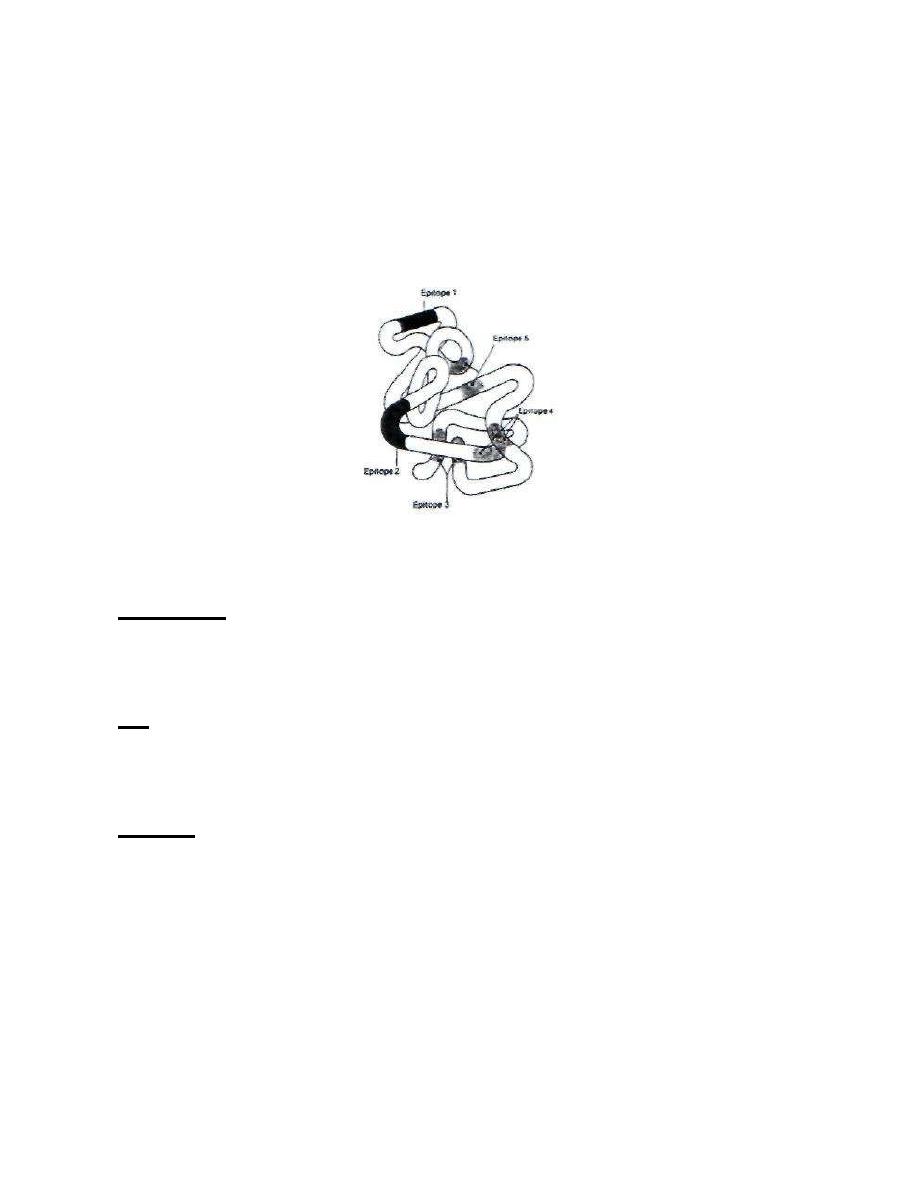
Immunology
Lec.1
ﺩ.ﻋﺎﺋﺪﺓ ﺍﻟﺪﺭﺯﻱ
Introduction to immunology & the immune system:
Immunology:
is the science which studies immunity. It is a relative
new branch of medical sciences. Many of the observations in
immunology were made by microbiologists at the beginning of the last
century through the researches for protection against infectious
diseases.
The Latin term "immunis", meaning "exempt", is the source of the
English word immunity, meaning the state of protection against foreign
organisms or substances.
Components of immunity:
The immune system is designated to produce a coordinated response to
the introduction of foreign substances into the body. It is divided into
TWO complementary arms:
1- non-specific component
→ Innate immunity
2- specific component
→Adaptive immunity
Innate (natural, native) immunity:
Non-specific host defenses that exist to a particular pathogen. This type
of immunity present since birth (pre-exist) & it is the main, first line of
defense against microbial invaders.

It's characteristics are that:
1- It's preexist, it present for life.
2- It has no specificity (it can't discriminate between different types of
foreign substances).
3- It has no memory (it can't remember any previous exposure).
4- It is non-adaptive or acquired.
Innate immunity comprises three types of defensive
barriers:
1- Mechanical barriers
2- Humoral (chemical) barriers
3-
Cellular barriers
1- Mechanical barriers: these barriers inhibit the attachment &
penetration of infectious agents, they include the following:
A/ Intact skin & mucous membrane: these are the first line of defense
against infection. The keratinized outer layer of dead cells, the
successive layers of epidermis, & the contiguous mucosal epithelium
are impenetrable to microbe.
B/ Mucous: it coats the epithelial cells of mucosa. Bacteria & other
particles are trapped in viscous mucous & are removed by other
mechanisms:
I- beating of cilia of epithelial cells in respiratory tract removes
contaminating
microbes
that
become
trapped
in
mucous.
II- coughing & sneezing enhance dislodge & help to expel mucous
blanket.

C/ Shedding of cells that carry microbes provide a mechanical
cleansing action.
D/ Flushing action of saliva, tears, urine, & other body fluids assist in
washing microbes from the body.
E/ Vomiting, peristalsis, diarrhea... etc. also eliminate pathogenic
organisms.
However, some invaders may pass the mechanical barriers , so they will
face the Humoral barriers.
2- Humoral barriers:
are numerous substances found in body
secretions & provide a natural defenses against microorganisms (m.o)
that invade the body. They include:
1- Tears
→ contain lysozymes which lyses bacteria by destroying the
peptidoglycan layer of bacterial cell wall.
2- Fatty acids of skin
→ inhibit growth of m.o. by denaturizing the protein
of cell membrane.
(Sebaceous glands of skin secrete sebum which is an oily secretion
consist of lactic acids & fatty acids & it maintains the pH of skin between
3-5).
3- Saliva
→ contains enzymes that cause damage to the microbial
cell wall & membrane & cause leakage of cytoplasm.
Also it contains complement components & antibodies that help in the
opsonization & lyses of m.o.
4- Gastric acid
→ acidity of stomach can kill most ingested m.o. It
causes denaturation of cell wall protein.
5- Bile acids
→ interfere with vital function of cell membrane.

6- Trypsin
→Hydrolyze protein of cell membrane & cell wall.
7- spermin
→it is a pH-dependent poly amine found in sperms & seminal
fluid. It inhibits growth of gram - positive bacteria.
8- Lactoferrin & Transferrin
→these are iron binding proteins, they
sequester iron required for bacterial growth as an essential metabolite.
* Other humoral factors are:
-
Complement components: complements are a series of about 20
serum proteins which are functionally inactive, but once activated, they
play a major role in HDM (host defense mechanism) & inflammatory
processes.
Complement is a lytic system, non- specific in its mode of killing &
causing lyses of the invaders.
-Interferons (IFNs): these proteins are not antiviral by themselves but
induce an antiviral state in other cells following viral infection.
INFs combine with specific receptors on cytoplasmic membrane &
activate cellular genes to produce an anti-viral proteins that interfere with
translation of viral m-RNA.
They are of 3 types:
IFN-
α ◊ secreted by macrophages & other leukocytes.
IFN-
β ◊ secreted by fibroblasts.
IFN-
ү ◊ secreted by T-lymphocytes.
* If the m.o. manages to pass the second barrier, it will be faced by
another barriers which are the cellular barriers.

3- Cellular barriers:
- Cells of phagocytosis:
Phagocytosis is the process by which particulate substances such as
bacteria are ingested by a cell & destroyed.
a. Neutrophils (polymorph nuclear leukocytes- PMNs):
These are granulocytes that circulate in blood & migrate quickly in
response to local invasion by m.o.
b. Monocytes:
Also circulate in blood but in much lower number than neutrophils.
They migrate to tissues, where they differentiate into macrophages,
which reside in all body tissues.
e.g. - kupffer cells are macrophages in liver
- histiocytes are macrophages in connective tissue
- splenocytes in spleen
- Other types of cells:
Natural killer cells (NK): these are cytotoxic granular lymphocytes
that play an important role in innate host defenses.
They are specialized in killing virus-infected cells & mutated
(precancerous) cells by secreting cytotoxins (perforins & granzymes).
Physiological factors contribute to innate immunity:
1- The inflammatory process
As a result of inflammation, body fluids & phagocytic cells are brought
into the site of injury.
2- Body temperature
Some organisms do not infect human because they grow poorly at 37°C
3- Hormonal balance

4- Age
People who are very young < 3 yrs old
Very old >75 yrs old
are more susceptible to infection because their immune response
is suboptimal.
If the invader manages to pass natural HDM, it will face another limb
of defense mechanism which is the specific immunity.
Adaptive immunity:
Adaptive (acquired, specific) immunity, is capable of recognizing
& selectively eliminating foreign microorganisms & molecules. These
host defenses are mediated by TWO interrelated & interdependent
mechanisms:
1- Humoral immunity primarily involves bone marrow-derived B-
lymphocytes or B-cells. Interaction of B-cells with antigen results in
proliferation & differentiation into antibody secreting plasma cells.
2- Cell-mediated (cellular) immunity primarily involves thymus-
derived T- lymphocytes or T-cells.
Characteristics of adaptive (acquired) immunity:
1- The ability to distinguish self from foreignness (self/non-self
recognition).
2- It has specificity:
Cells of the immune system react only with matching (homologous)
immunogens.
3- Immunologic memory:
The immune system remember homologous immunogens & respond
rapidly to them on subsequent exposure.

4- Diversity:
The human immune system is capable of producing a vast number of
different antibody molecules, each with its own specificities.
Specific immunity may be acquired by natural or artificial
processes:
1-Naturally acquired:
a- placental transfer of antibody (passive)
b- Recovery from disease (active)
2-Artificially acquired:
a- administration of antitoxin (passive)
b- Vaccination (active)
Antigens & Immunogens:
Antigens are molecules that react with antibodies, whereas
immunogens are molecules that induce an immune response.
Immunogens have the capacity to stimulate the immune system to
produce an immune elements & react specifically to it.
Criteria of immunogenicity:
1- Foreignness: it must be recognized as foreign.
2- Molecular weight: The size of a molecule is important in
determining its ability to induce an immune response. Usually the
larger the molecule, the better the immunogen, because it provides
the opportunity for more chemical complexity.
Proteins are the most potent immunogens due to its high molecular
weight.
In general, mol.wt. > 100000 dalton ---- potent immunogen
mol.wt. < 10000 dalton ---- weak immunogen

3- Chemical structural complexity:
It enables the formation of numerous different structures, called
Epitopes, that are the units to which antibodies are
directed.
Proteins are the most potent immunogens because they are built
from 20 amino acids and more, and thus can include many
distinct
epitopes, while
most polysaccharides
are
weak
immunogens because they are constructed of only a few
monosaccharaides & hence they do not possess sufficient chemical
diversity for full immunogenicity
4- Dose & route of antigen administration
Generally, minimal doses and excessive large doses of antigen impair
the immune response.
- The subcutaneous or intramuscular routes of antigen injection are best
for inducing an antibody response, while I.V. route minimize the immune
response.
5- Genetic constituents of the host
6- Antigenic determinants (Epitopes)
Immunogens & antigens possess unique cluster of chemical grouping
that serve as the B-cell &T-cell stimulating sites in the molecule. These
sites are called epitopes
.
Epitope
is that portion of an antigen with which antibodies & T-cell
receptors react.
• Structure of epitopes:
-Size: they consist of 4-5 amino acids of a protein or an equal-size area
of polysaccharide.
-Conformation: epitopes could be linear or conformational (folded)
-Site: topographic or internal

• Function:
Epitopes determine the specificity of the antigen molecule. Antigens that
share one or more identical or similar epitopes are cross-reactive
antigens.
Adjuvants: These are chemical substances that enhance the immune
response to an immunogen. They act non-specifically by stimulating the
immunoreactive cells or by releasing immunogen slowly.
Ex. Some human vaccines contain adjuvants such as aluminum
hydroxide or lipid.
Hapten:
A small organic molecules that are non- antigenic & non-immunogenic.
Chemical coupling of a hapten to large protein (existing Ag), called
carrier, yield an immunogenic hapten-carrier conjugate.
Hapten can add a new epitope (i.e. a new specificity) when combined to
an existing Ag.
